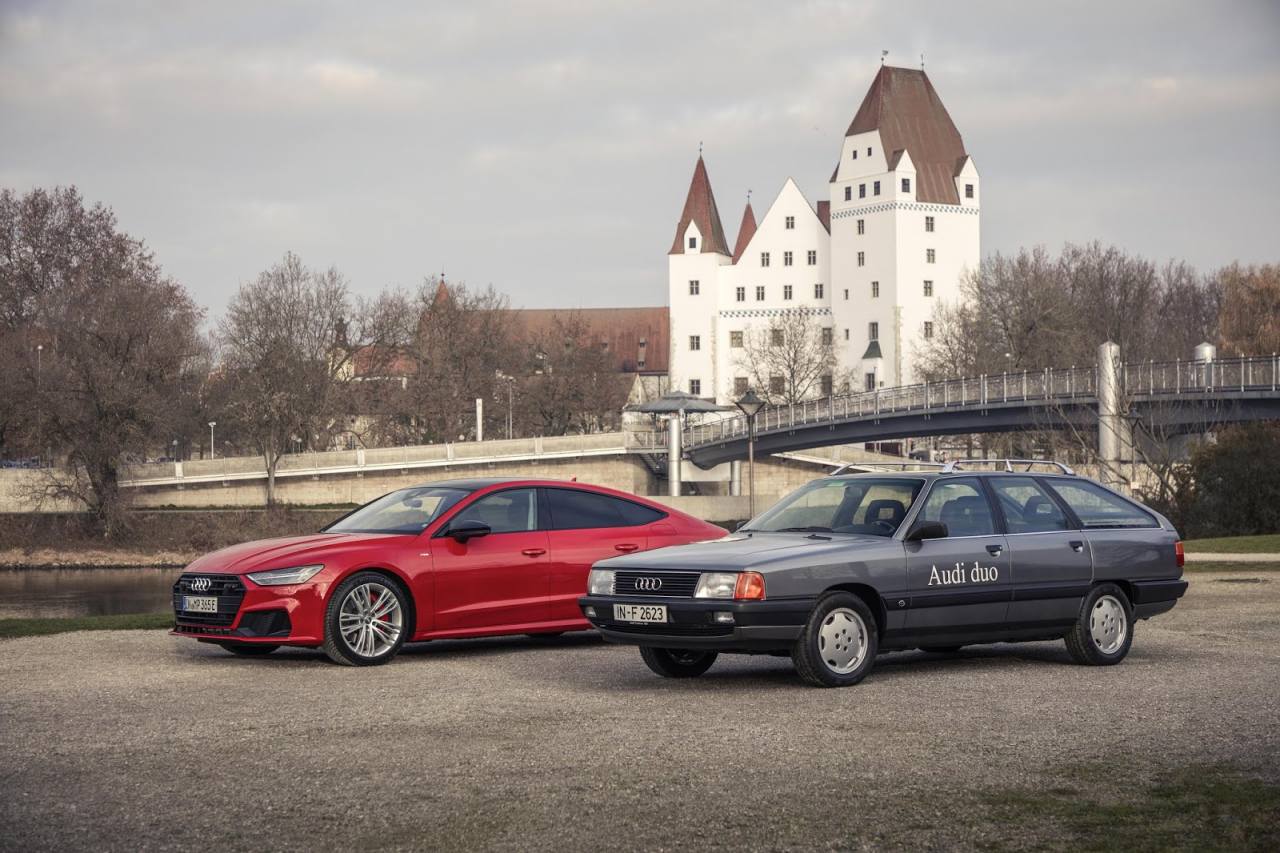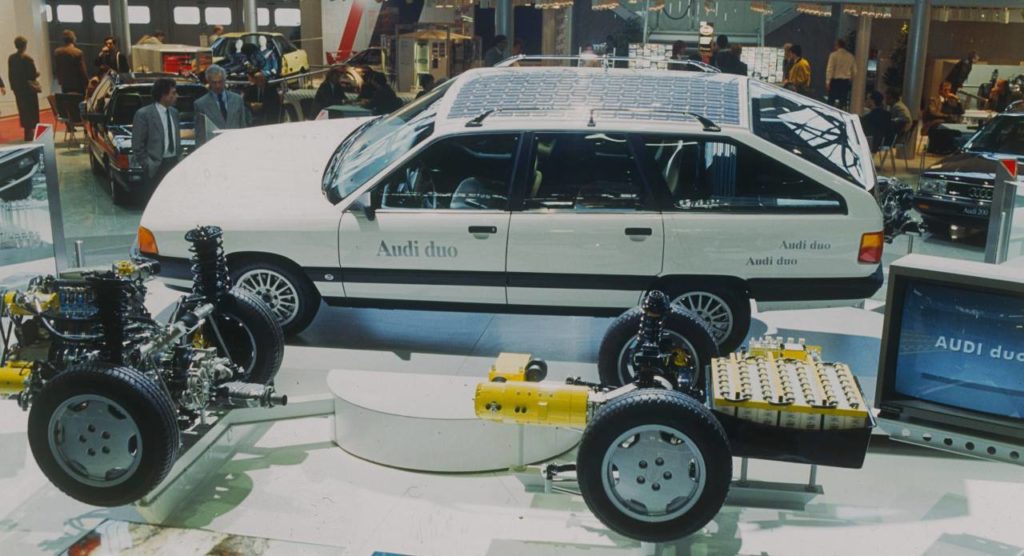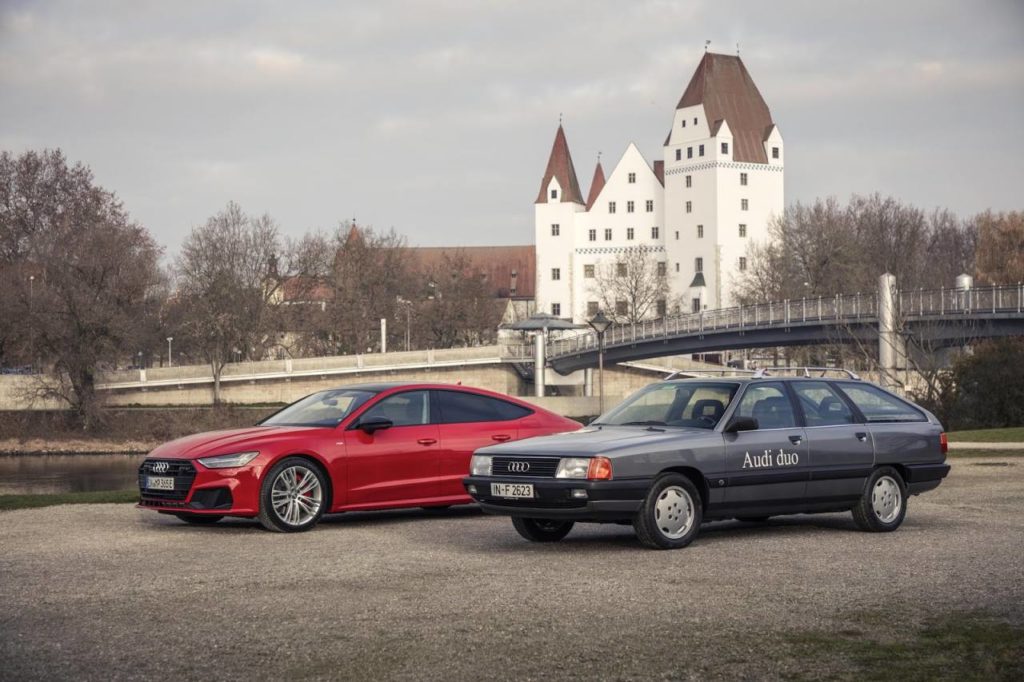Many of you undoubtedly think that the plugin hybrid is a relatively modern development. Still, in the late 80s, brands like Audi already experimented with this system that proposes to combine a combustion engine with an electric one, along with being capable of recovering its autonomy by a power outlet.
This is basically what the Audi Duo was like. A true pioneer of plugin hybrid technology that hit the road in 1989 in the form of a working prototype shows that we haven’t progressed much since then. 31 years have passed since the launch of a fleet of 10 Duo units that worked for a time as a taxi in the German city of Ingolstadt.
This was based on an Audi C3 100 Avant, which matches current proposals that do not use dedicated platforms. Inside we find a 2.3-liter gasoline engine with four cylinders and 134 HP of power, pulled from the front axle.
A small 9 kW (12 hp) Siemens electric motor was driving from the rear, powered by a nickel-cadmium battery. The capacity is not apparent as its capacity indicates that it had “9 kW” in many articles, possibly confusing this figure with engine power. A pack that should be around 10 kWh of capacity and was located under the boot, allowed it to travel up to 38 km only with electricity. That number could be extended thanks to a photovoltaic panel located on the roof, which has also been one of the pioneers in this type of applications.
One of the most curious aspects was the operation of the hybrid system. Today we are used to it working automatically, jumping from gasoline to electric or hybrid mode with no more interaction by the driver than pressing a button when he prefers one or the other. Leaving the computer to select the most suitable one in every situation.
In the Audi Duo, this work had to be done manually by the driver. The vehicle ran in the hybrid mode most of the time. To go into 100% electric mode, the car had to be stopped, pit in neutral gear and a button pressed which prevented the gasoline engine from going into action. Thus making it drive without emissions up to a maximum speed of 50 km/h.
Something very impractical that quite limited a configuration despite being quite competitive more than 30 years ago. It also received two subsequent updates that finally resulted in the first plugin hybrid from Audi, which arrived eight years after the first Duo with the name Audi A4 Duo. Becoming the first retail plugin.
A model that had a 90 hp 1.9 diesel engine, accompanied by a 21 kW (29 hp) electric motor which, unlike the first model, was also housed in the front area, and drove it alone up to a maximum speed of 80 km/h. It had regenerative braking and autonomy in an electric model of 50 kilometers. Features that almost any current plugin could sign.
The main problem was a very high price. The plugin A4 cost twice as much as a diesel A4. Only 60 units were produced since there was no demand for it. Something that helped accelerate the end of its production which ended in 1999, just two years after starting sales.



